Brands have countless acquisition channels to capture new customers—ads, influencers, SEO, and social media. But one of the most overlooked and high-converting channels is your existing customer base.
When you turn loyal customers into advocates through a referral program, you tap into trust to bring in high-intent traffic that drives higher conversions and retention.
In this article, we break down everything you need to know about running a referral marketing program, its benefits, and the strategies you can use to continue capturing new customers from this acquisition channel.
Want to see how leading brands have set up successful referral programs? Dive into 15 real referral program examples from Shopify brands like Latico Leather, Casper, Divi, etc.
What is referral marketing?
Referral marketing is a strategy where businesses encourage existing customers to recommend their products to friends, family members, and their wider network through incentives like discounts or rewards.
While organic word-of-mouth marketing is not initiated by the brand, referral marketing is an active marketing strategy designed to drive new customer acquisition.
Here’s how a customer referral program works for ecommerce brands:
- Existing customers receive a unique referral link or code to share with their network.
- They refer people via email, social media, or messaging apps.
- When a new customer uses this link or code to make a purchase, the referring customer receives a reward.
- The referred shopper often gets a welcome discount when placing their first order.
Unlike affiliate programs, referral programs are peer-driven and often tied to free products, discounts, or perks rather than commissions.

Difference between a referral program and a loyalty program
It’s easy to confuse a referral program with a loyalty program, but they serve different goals. Referral programs acquire new customers by incentivizing happy customers. Loyalty programs are focused on customer retention, rewarding existing customers for continuing to engage with the brand.
While both offer rewards, how they get rewarded is different. In a referral program, the referrer earns a reward when a referred customer converts, while a loyalty program rewards based on repeat purchases or actions.
Many brands combine their referral and loyalty programs, making referring new customers one of the actions to earn rewards. While both can co-exist, a customer referral strategy specifically boosts brand awareness, drives new business, and builds long-term trust through personal connections.
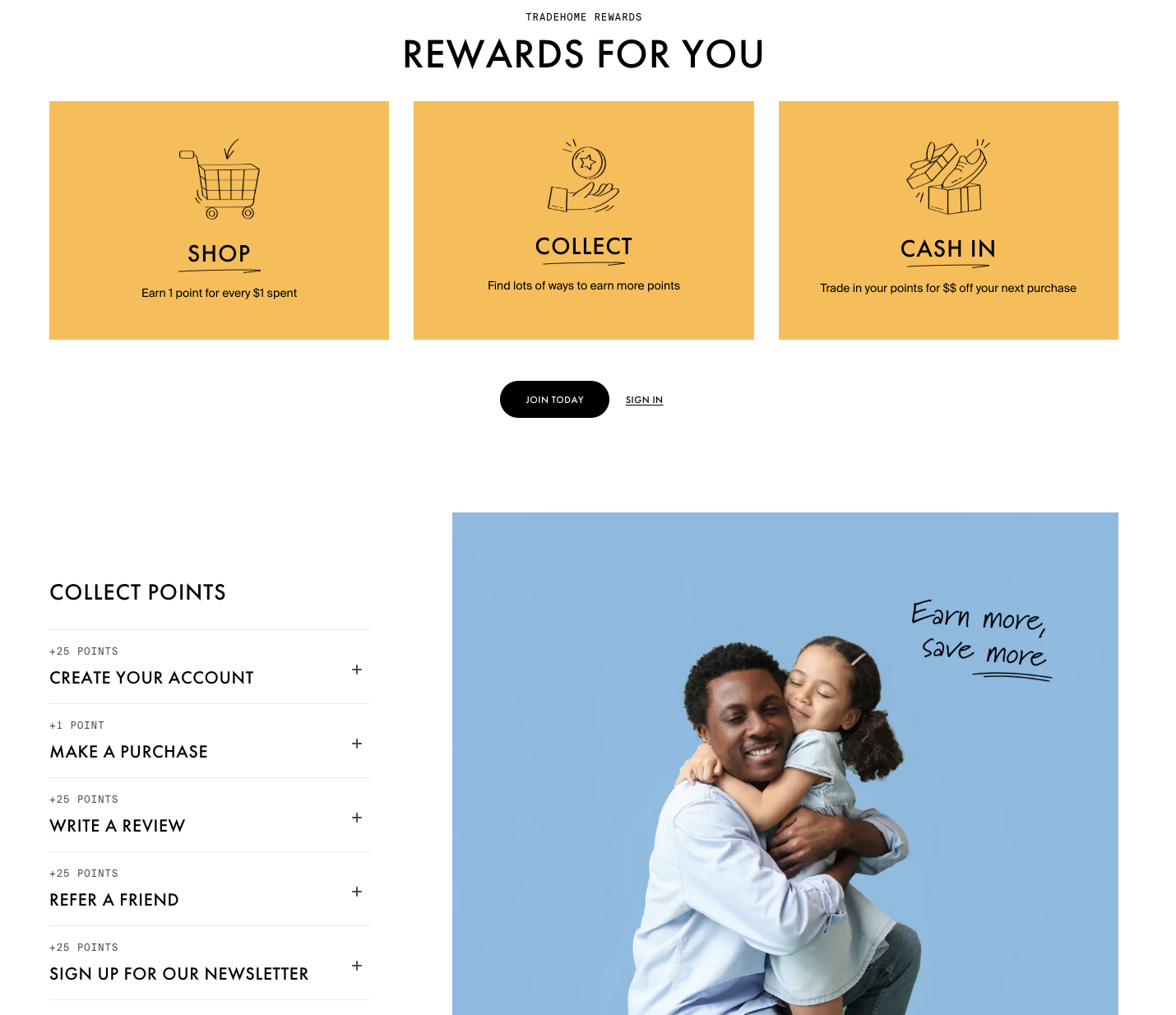
Why are referral marketing programs important for ecommerce stores?
For DTC brands, a customer referral program is one of the most cost-efficient and scalable marketing strategies to bring in new customers, reward existing ones, and build long-term loyalty. Here’s why referral programs are a must for ecommerce stores:
1. Builds trust through word-of-mouth
Traditional advertising can only take you so far. Referral marketing relies on trust, which drives more conversions faster.
When satisfied customers recommend your brand to friends or family, it holds more weight than any paid campaign. Referred customers tend to convert faster because they’re already primed by social proof.
According to Nielsen, 88% of consumers trust recommendations from friends and family over all other forms of advertising.
2. Lowers customer acquisition costs
In traditional advertising, you pay upfront for impressions or clicks regardless of the outcome. Referral marketing, however, operates on a performance model. You only incur costs when a referred customer makes a purchase, ensuring that your marketing budget is spent on actual conversions.
Referral marketing reduces customer acquisition costs by up to 50% compared to traditional channels. This is what makes it one of the most cost-effective acquisition methods.
Moreover, referred customers tend to convert more quickly and require less convincing, further decreasing acquisition expenses. Customers referred by friends or family convert five times faster than those acquired through other channels.
3. Increases customer lifetime value
Since referred customers are brought in by someone they trust, they tend to stick around longer, making them more loyal, more engaged, and more likely to make repeat purchases.
In fact, referred customers generate $3.62 in revenue per visit and tend to stay with the brand longer than customers acquired through paid ads.
A referral marketing program creates a win-win: The referrer earns referral rewards, the new shopper gets a discount on their first order, and your brand captures a high-quality customer with higher retention potential. This boosts customer loyalty among existing and new customers, increasing customer lifetime value (CLTV) over time.
What’s more, referred customers bring in about 30%-57% more new customers than other customers.
4. Drives organic, scalable growth
Referral programs build a self-sustaining growth loop. One customer brings in another, who then brings in more.
This compounding effect turns your current customers into a scalable acquisition engine, without constantly increasing your marketing budget.
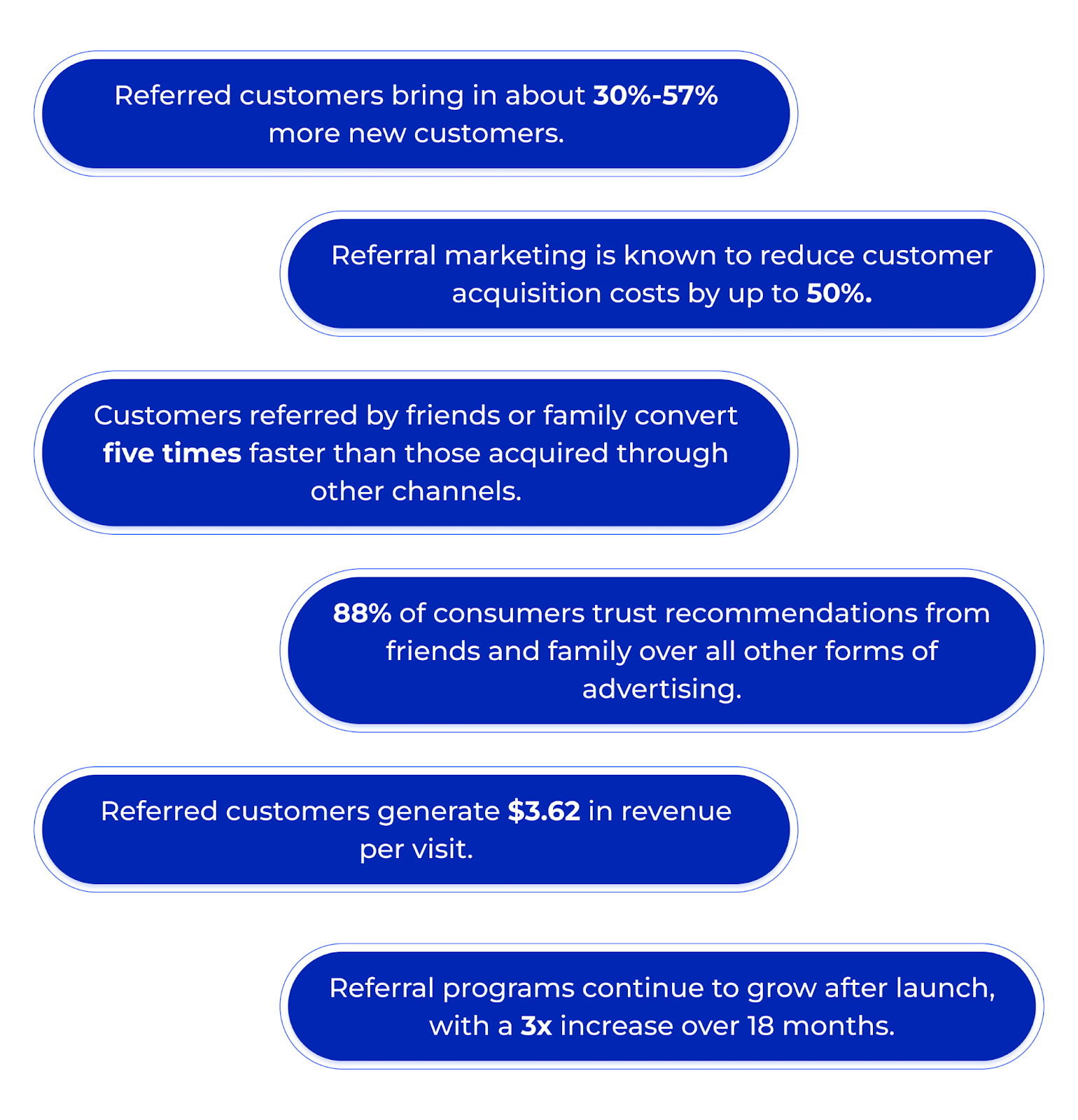
How to create an effective referral marketing program strategy
Implementing a successful referral marketing program involves more than just offering rewards. It requires a strategic approach that aligns with your business goals and connects with your target audience.
Here's a step-by-step guide to building a referral program that drives customer acquisition, increases loyalty, and boosts revenue.
Step 1: Enroll your customers into your referral program automatically
Make it effortless for customers to join your referral program. Instead of requiring them to sign up, inform customers after their purchase that they can refer new customers to unlock rewards like discounts or cashback. Offer one-click referral links that they can instantly share, either through the post-purchase page or by email.
For example, OUTWAY, a high-performance sock brand, wanted to maximize BFCM traffic and drive long-term revenue without high advertising costs. Instead of relying solely on traditional marketing, they automatically turned every new customer into a referrer.
Using Social Snowball, they auto-enrolled new customers as referrers when they made a purchase. On their thank you page, customers could copy a unique referral code to share with others instantly.
Their efforts increased word-of-mouth referrals and long-term sales growth, transforming one-time buyers into people who engage in repeat purchases. Read how Outway Socks leveraged referral marketing.
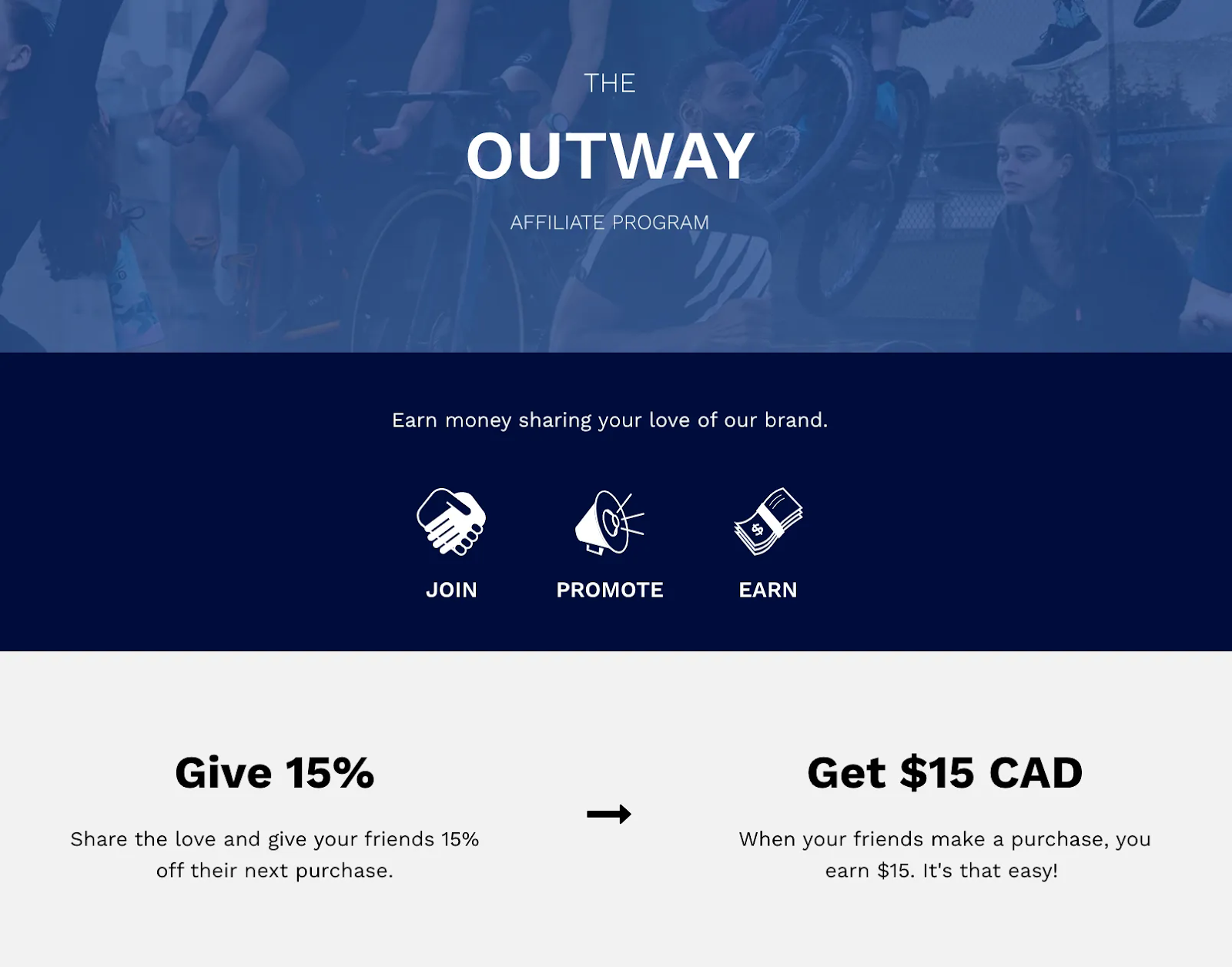
Step 2: Set an exciting commission
Motivate both referrers and referred customers with compelling referral incentives. Instead of vague promises like “Get a discount”, be specific about what you’re offering. There are 2 types of rewards you can offer:
1. Double-sided rewards
A straightforward “Give 20% off, Get 20% off” works well, especially when tied to a minimum spend.
2. Tiered rewards
A tiered referral program encourages repeat participation by offering increasing rewards as customers refer more people.
Here’s an example:
- Refer 3 friends → $10 store credit per referral
- Refer 10 friends → Usual store credit plus a free product
- Refer 20 friends → VIP status with exclusive perks
For example, haircare brand Divi structured its referral program with tiered incentives using Social Snowball. Customers start with small rewards (gift cards) and work their way up to VIP perks (free products), keeping them engaged for the long run.
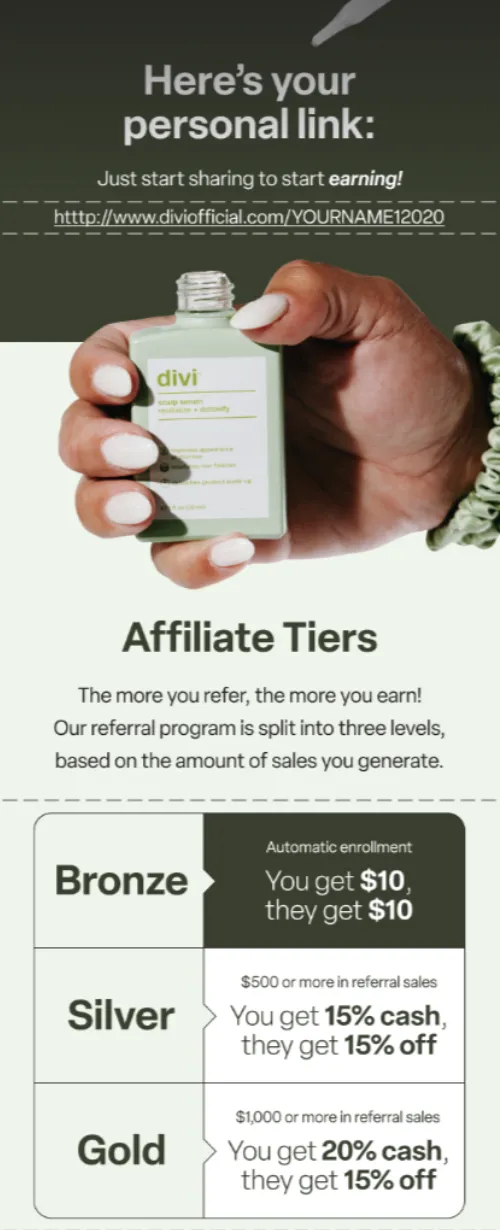
Pro-tip: Offer exclusive perks for high performers. Reward customers who constantly refer new buyers to appreciate their efforts and keep them engaged. Here are some ideas on how you can do this:
- Early access to new product launches.
- Lifetime discounts on product subscriptions.
- VIP-only sales or personalized customer experiences
Step 3: Promote it to the most motivated customers
Not everyone is a good candidate to be a referrer. When running referral campaigns to promote your program, focus on customers who already trust your brand and are more likely to bring in high-quality referrals.
Here’s how to identify them:
- In tools like Shopify or Klaviyo, pull a list of customers who have:
- Made 2 or more purchases
- An above-average order value
- Engaged via product reviews, social mentions, or high email open rates
- Run NPS surveys (via Okendo, Stamped, or Delighted) to tag customers with high satisfaction scores; they’re more likely to refer.
You can create a list or segment of these customers and set up an email campaign to promote your program. This way, you can activate customers who are sure to drive referrals without spamming your entire mailing list.
Place your referral program at the right touchpoints
Maximize visibility by promoting your referral program across various customer interactions:
- Dedicated landing page: A landing page (particularly within your customer account page) that explains your referral program makes it easy for all your customers to see the rewards they can earn and copy the code to refer.
- Post-purchase communication: Invite your customers to join your referral program right after purchase on the thank you page and within the order confirmation email.
- Website integration: Use banners, sticky bars, or exit-intent popups for returning visitors who haven’t engaged with your referral program yet. Keep the messaging benefit-first like “Get $10 for every friend you refer.”
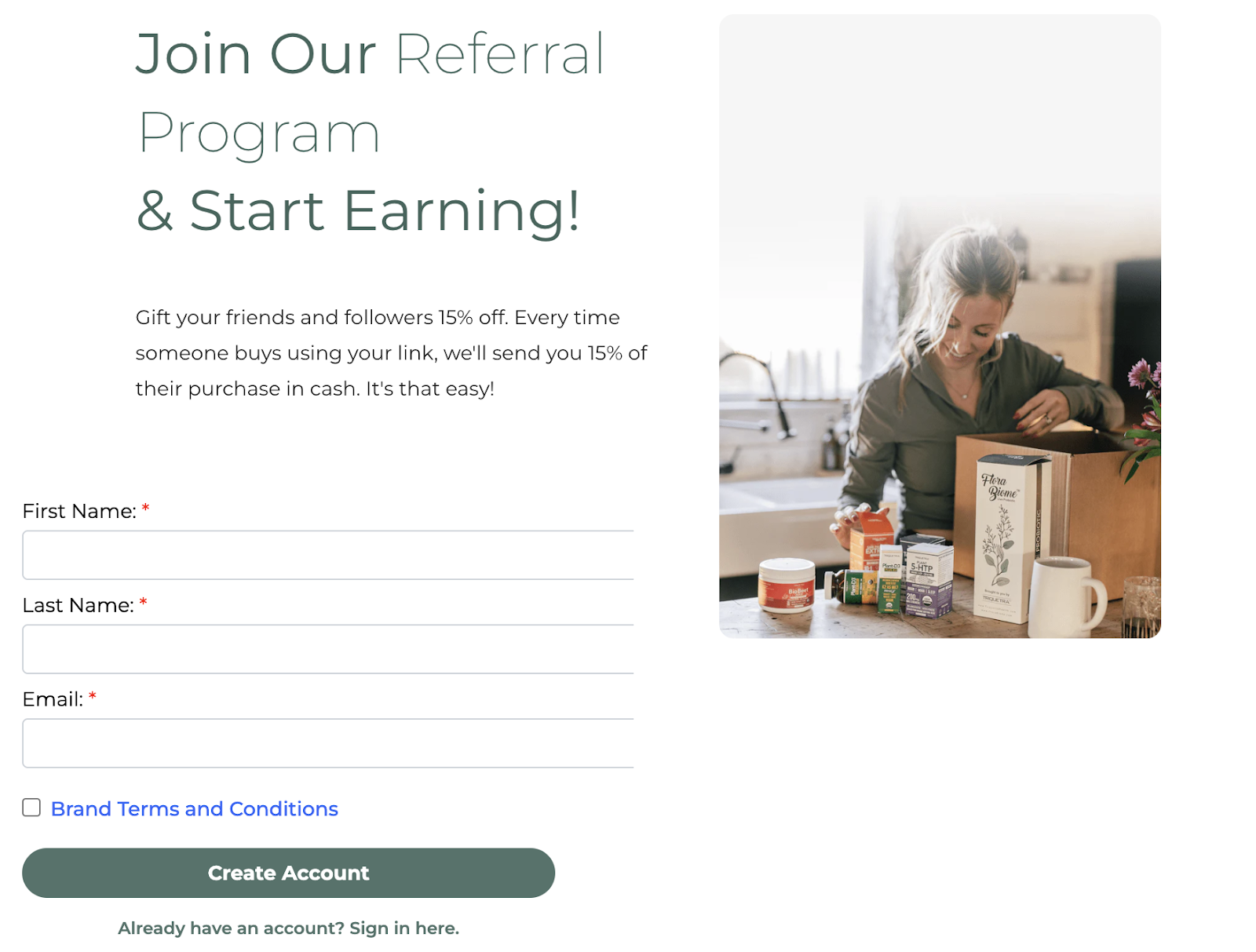
Leverage tools to simplify your process and increase conversions
Avoid building your program from scratch since it requires a lot of time and manual effort to manage. The right referral marketing software will automate tracking, payouts, and fraud prevention. Some features to look for are:
- Automated tracking: Monitor referrals, conversions, and reward distributions efficiently.
- Integration capabilities: Choose tools that integrate seamlessly with your ecommerce platform.
- Customization options: Personalize referral links, landing pages, and communication templates.
Social Snowball is built specifically for medium-to-large Shopify brands that want to turn customers into brand advocates. As soon as someone makes a purchase, they are automatically given a unique referral or affiliate link that they can start sharing instantly.
Moreover, their automated payout management system offers seamless integration with providers like Tremendous and Trolley. This makes payout options more flexible, catering to referrers’ preferences and earnings.

Take measures to prevent coupon code leaks
Referral programs are prone to abuse if safeguards aren't in place. From fake accounts to mass coupon leakage, even one loophole can kill your margins and credibility. Here’s how to protect your program:
- Single-use codes: Issue referral codes that expire after one use. This prevents mass-sharing on coupon forums and makes sure incentives go only to actual new users.
- Unique referral links: Use software that generates one-of-a-kind links for each participant. This helps trace every referral back to the source and detect patterns of abuse.
- IP and email redundancy checks: Block multiple redemptions from the same IP, browser fingerprint, or email variations (e.g., test+1@gmail.com). Most fraudsters rely on such tricks to game the system.
- Domain blacklists: Filter out redemptions from known fraud-heavy domains (like disposable email providers) using automated rule sets or built-in tool filters.
For example, Safelinks by Social Snowball turns every referral link into a secure, fraud-resistant URL. Some key benefits include:
- Prevent discount code leaks by tying the code to the specific referrer and referred buyer
- Deactivate links or block redemptions when suspicious behavior is detected
- Combine referral attribution + fraud detection without relying on basic cookie tracking
This is particularly effective if your Shopify store has faced leaks from public deal forums or bulk fake sign-ups. Safelinks guarantees that referral rewards are only given when both parties (referrer and referee) meet clean eligibility criteria; no exceptions.
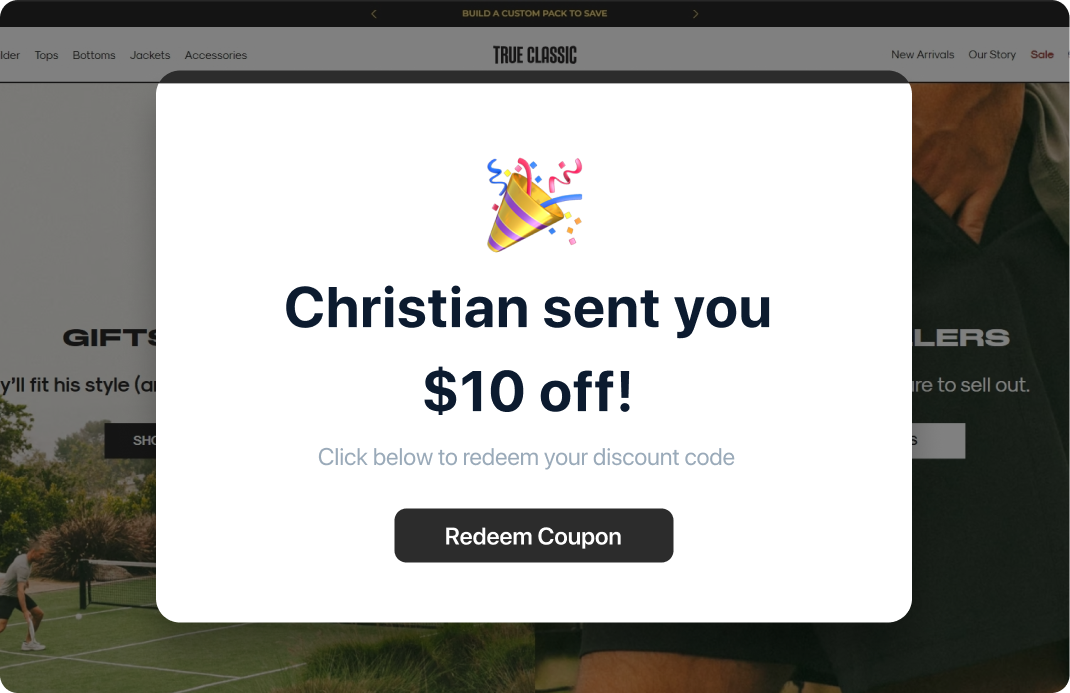
Monitor and analyze performance
Regularly assess the effectiveness of your referral process:
- Key metrics: Focus on key referral metrics that actually indicate performance, such as:
- Referral conversion rate: Percentage of referred users who purchase (15–20% is strong)
- Referral participation rate: Percentage of customers who’ve shared their referral link
- Customer acquisition cost (CAC): Total incentives ÷ number of converted referred customers
- Customer lifetime value (CLTV): Total worth of referred customers—how much they spend during their entire relationship with your brand
- Referral ROI: Total revenue from referrals ÷ total program cost
- A/B testing: Experiment with different referral program incentives, messaging, and designs to identify what resonates best.
- Feedback collection: Gather input from participants to uncover areas for improvement.
Reward customers driving in high referrals
Once your referral program is up and running, some customers will start to drive the majority of new referrals. You need to identify these top contributors and double down on incentivizing them to keep the loop compounding.
Rather than offering the same flat reward to everyone, build in tiered or performance-based rewards to keep these customers engaged long-term. Some proven ways to do this include:
- Monthly leaderboards to spotlight top referrers and create friendly competition.
- Exclusive perks, like early access to new products, beta features, or VIP tiers.
- Social proof through public shoutouts on email, social media, or even your homepage.
- Milestone bonuses for hitting specific referral goals (e.g., 5, 10, 25 referrals).
- Surprise thank-you kits that show appreciation and turn loyalty into advocacy.
Bonus: Gamify your referral program to increase engagement
Many referral programs fail because customers refer once (if at all) and then forget about them. Gamification keeps customers engaged by making referrals fun, competitive, and rewarding.
How to set this up:
1. Use leaderboards to drive friendly competition:
A referral leaderboard that displays top referrers in real time motivates customers to actively refer others.
- Send updates to referrers by email to keep them engaged.
- Offer weekly or monthly prizes for the top referrers ( like store credit, free products, or large discounts).
2. Create time-sensitive referral challenges:
Time-sensitive promotions push customers to refer immediately rather than putting it off (which often leads them to never refer at all).
- Challenges like "Refer 3 friends in 7 days for a free product of your choice” can drive action.
- Send seasonal refer-a-friend emails with limited-time bonuses, such as double rewards during Black Friday.
3. Activate your customers with engaging challenges:
If you already have customers actively referring your brand, incentivizing them with creative challenges can spark extra effort. This works especially well with loyal customers.
- Offer higher commission rates for a limited time to drive urgency.
- Encourage customers to create and share content featuring your products.
For instance, Javvy Coffee ran a 5-day Valentine's Day challenge, where customers were encouraged to post TikTok content and received a 20% commission for each qualified sale.
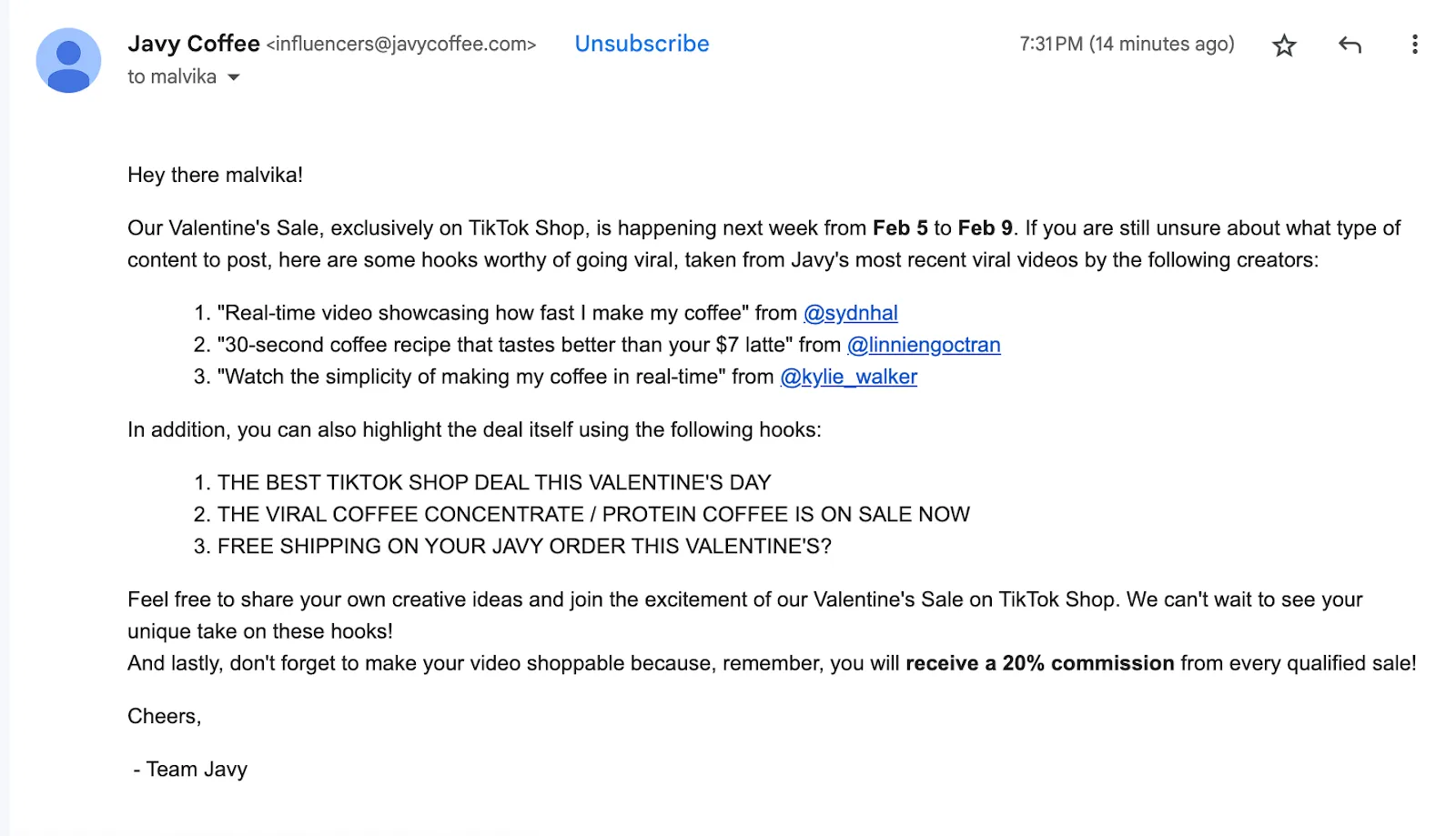
Want to know more about how you can leverage gamification to drive more revenue? Download our free guide now!
Ready to set up a customer referral program that drives sales?
A well-designed referral program can boost revenue and high-quality customer acquisition, but only if it’s engaging and rewarding. By simplifying enrollment, adding tiered incentives, and leveraging gamification, you can create a referral program that drives successful referrals and builds customer loyalty.
Social Snowball is a referral program software for medium-to-enterprise Shopify businesses that makes referral marketing effortless. Our platform automates customer onboarding, reward distribution, and fraud prevention, making sure your referral program runs smoothly. With features like tiered structures, instant payouts, and Safelinks to prevent coupon abuse, you can maximize word-of-mouth marketing without manual effort.
If you want your customers to bring in more customers and get rewarded for it this is the fastest way to make it happen.


.webp)
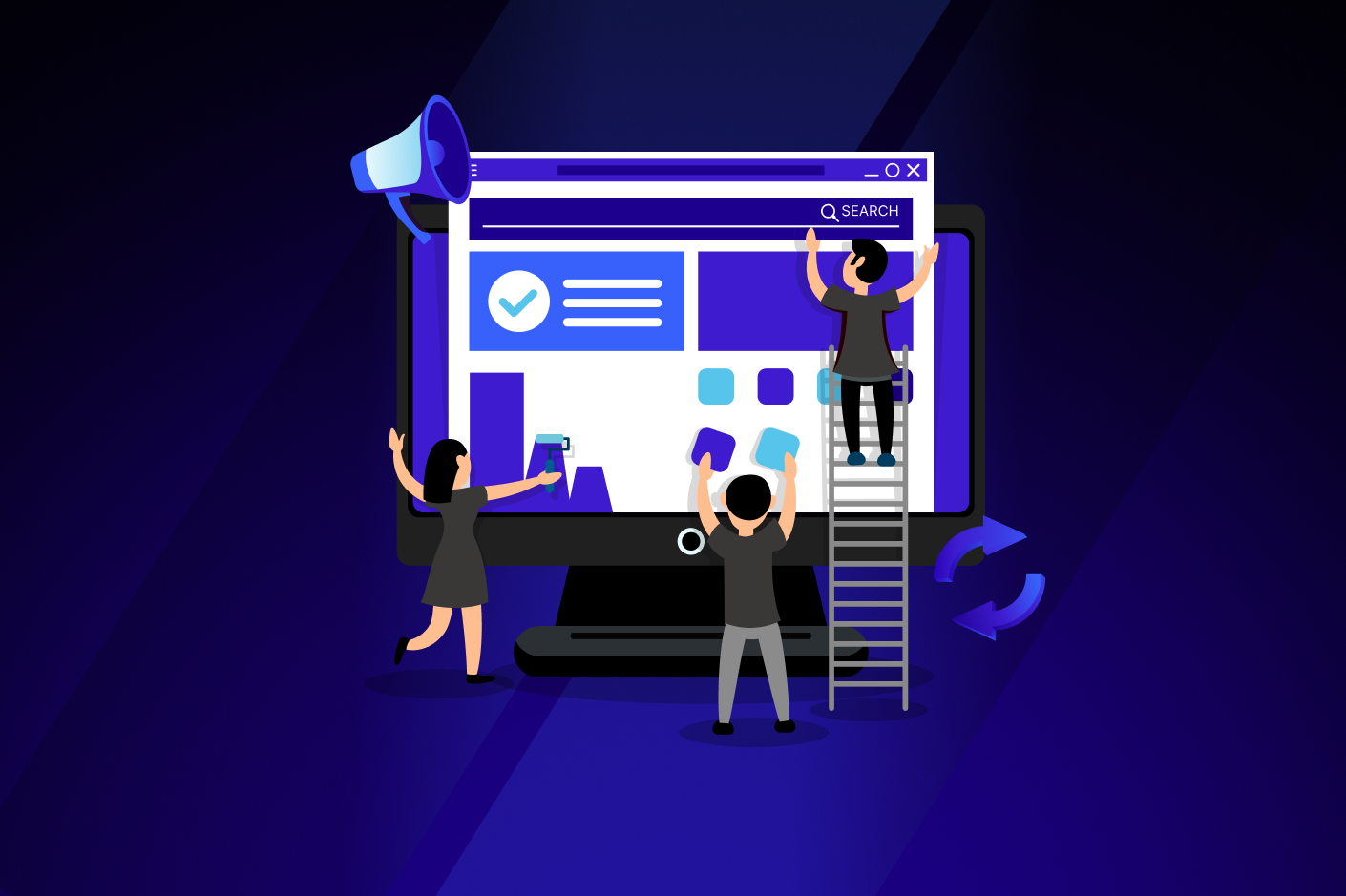

.webp)





